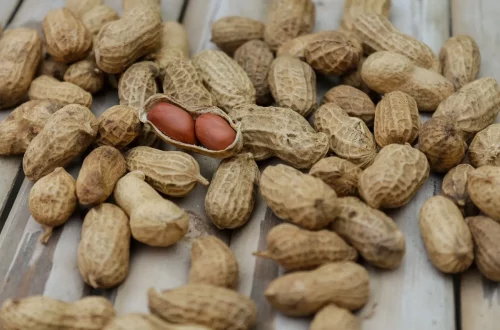
Flank Steak Nutrition Facts: A Comprehensive Guide to Healthy Eating
Flank steak is a popular cut of beef that has gained attention not only for its flavor but also for its nutritional benefits. This cut comes from the abdominal muscles of the cow, making it leaner compared to other cuts like ribeye or T-bone. Flank steak is known for its rich, beefy taste and its versatility in various culinary applications, from grilling to stir-frying. Many health-conscious consumers are increasingly looking for protein sources that provide essential nutrients without excessive fat.
As dietary preferences evolve, flank steak emerges as an appealing option for those seeking a balance between flavor and health. It can be an excellent addition to a balanced diet when prepared correctly. Understanding the nutritional profile of flank steak helps consumers make informed choices about their meals. Whether you are a fitness enthusiast or just someone looking to eat healthier, exploring the nutrition facts of flank steak can enhance your culinary adventures while supporting your dietary goals.
Nutritional Profile of Flank Steak
Flank steak is primarily known for its protein content, making it a great choice for those looking to meet their daily protein requirements. A typical serving of flank steak, which is about 3 ounces, contains around 22 grams of protein. This high protein content is essential for muscle repair and growth, making flank steak an ideal choice for athletes and active individuals.
In addition to protein, flank steak is relatively low in fat compared to other cuts of beef. A 3-ounce serving typically contains about 9 grams of fat, with only 3 grams of saturated fat. This lower fat content makes it a healthier option for those looking to reduce their saturated fat intake, which is often recommended for maintaining heart health.
Flank steak also offers important vitamins and minerals. It is a good source of B vitamins, particularly B12 and niacin, which are vital for energy production and the proper functioning of the nervous system. Additionally, flank steak provides essential minerals such as iron, zinc, and selenium. Iron is crucial for oxygen transport in the blood, while zinc supports immune function and wound healing. Selenium acts as an antioxidant, helping to protect the body from oxidative stress.
Overall, the nutritional profile of flank steak makes it a well-rounded choice for anyone looking to incorporate a flavorful protein source into their diet. Its combination of high protein, lower fat, and essential vitamins and minerals positions it as a health-conscious option for meat lovers.
Health Benefits of Including Flank Steak in Your Diet
Incorporating flank steak into your meals can provide several health benefits due to its rich nutritional content. One of the most significant advantages is its role in muscle maintenance and growth. The high protein content in flank steak supports muscle repair, making it an excellent post-workout meal. Consuming protein-rich foods after exercise helps to rebuild muscle fibers that are broken down during physical activity, promoting recovery and strength gains.
Moreover, the iron content in flank steak is beneficial for individuals who may be at risk of iron deficiency, such as women, vegetarians, and athletes. Iron is essential for producing hemoglobin, which carries oxygen in the blood. Adequate iron levels are crucial for maintaining energy levels and preventing fatigue. Including iron-rich foods like flank steak in your diet can help ensure you meet your body’s needs.
Flank steak also offers a source of healthy fats. While it is lower in fat compared to other cuts, the fat it does contain is primarily unsaturated, which can be beneficial for heart health. Unsaturated fats are known to help lower bad cholesterol levels and reduce the risk of heart disease when consumed in moderation.
Additionally, the presence of B vitamins in flank steak supports various metabolic processes, including energy production and cognitive function. B12, in particular, is critical for maintaining healthy nerve cells and producing DNA. Including flank steak in a balanced diet can contribute to overall health and well-being.
Lastly, because flank steak is versatile, it can be prepared in various ways, making it easier to incorporate into different meals. Whether grilled, marinated, or stir-fried, flank steak can be paired with a variety of vegetables and whole grains, enhancing its nutritional benefits and making it a satisfying choice for any meal.
Cooking Techniques for Flank Steak
Preparing flank steak can be straightforward, but using the right cooking techniques can significantly enhance its flavor and tenderness. Due to its lean nature, flank steak can become tough if overcooked; therefore, cooking it to the right temperature is essential.
One popular method is grilling. Grilling flank steak over high heat allows for a delicious char on the outside while keeping the inside juicy. It’s advisable to marinate the steak for at least 30 minutes before grilling. Marinades made with acidic ingredients like vinegar or citrus juice can help tenderize the meat, adding flavor and moisture.
Searing is another effective technique. By quickly cooking the steak in a hot skillet or grill, you can develop a caramelized crust that locks in juices. After searing, it’s best to finish cooking in the oven at a lower temperature to achieve the desired doneness without drying out the meat.
For optimal tenderness, flank steak should be sliced against the grain. This technique shortens the muscle fibers, making each bite more tender. It’s important to let the steak rest for a few minutes after cooking to allow the juices to redistribute, preventing them from spilling out when cut.
Slow cooking is also an option if you’re looking for a different flavor profile. Braising flank steak in a flavorful liquid can result in a tender dish that absorbs all the surrounding spices and flavors. This technique is particularly popular in stews and tacos.
Experimenting with various cooking methods can help you discover the best way to enjoy flank steak while reaping its nutritional benefits. Whether you prefer a quick grill or a slow braise, this cut offers endless culinary possibilities.
Flank Steak in a Balanced Diet
Incorporating flank steak into a balanced diet requires mindful planning and portion control. While it is a nutritious option, moderation is key to maintaining a healthy dietary pattern. Pairing flank steak with a variety of vegetables and whole grains can create a well-rounded meal that provides essential nutrients.
Consider adding colorful vegetables like bell peppers, zucchini, or broccoli to your flank steak dishes. These vegetables not only add flavor and texture but also boost the meal’s fiber content, aiding digestion and promoting satiety. Fiber is essential for maintaining a healthy gut and can help regulate blood sugar levels.
Whole grains, such as quinoa, brown rice, or whole wheat tortillas, can complement flank steak by providing additional nutrients and energy. Whole grains are rich in fiber, B vitamins, and minerals, contributing to overall health. Combining these elements can create a balanced plate that satisfies both hunger and nutritional needs.
It’s also essential to be aware of portion sizes when consuming flank steak. A serving size of 3 to 4 ounces is generally recommended for meat. This allows you to enjoy the benefits of flank steak without overwhelming your diet with excess protein or calories.
For those following specific dietary plans, flank steak can fit into various approaches, including paleo or low-carb diets. Its high protein content and low carbohydrate count make it a suitable option for these eating styles.
Overall, flank steak can be a valuable component of a balanced diet when consumed mindfully and in conjunction with a variety of other nutritious foods. By making conscious choices about how you prepare and pair this cut, you can enjoy its delicious flavor while supporting your health goals.
This article is not intended as medical advice. For any health concerns or dietary changes, please consult with a healthcare professional.




